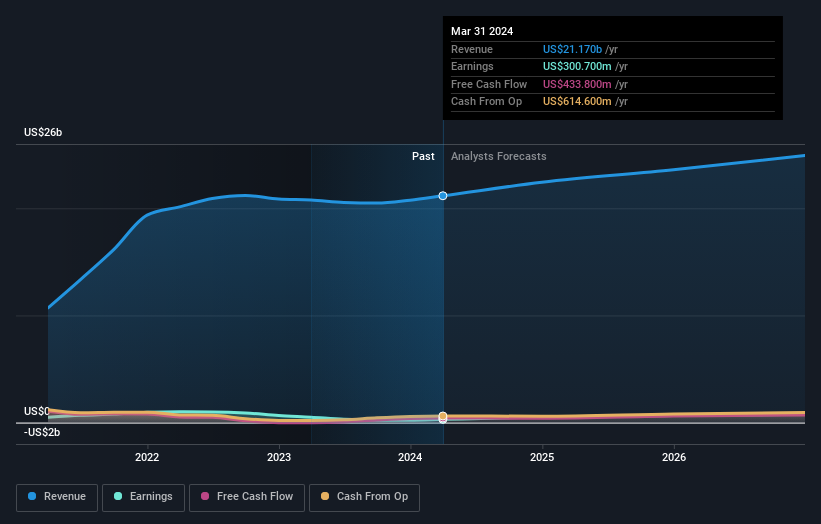Earnings Beat: Jones Lang LaSalle Incorporated Just Beat Analyst Forecasts, And Analysts Have Been Updating Their Models
As you might know, Jones Lang LaSalle Incorporated (NYSE:JLL) just kicked off its latest first-quarter results with some very strong numbers. The company beat forecasts, with revenue of US$5.1b, some 6.4% above estimates, and statutory earnings per share (EPS) coming in at US$1.37, 137% ahead of expectations. The analysts typically update their forecasts at each earnings report, and we can judge from their estimates whether their view of the company has changed or if there are any new concerns to be aware of. Readers will be glad to know we've aggregated the latest statutory forecasts to see whether the analysts have changed their mind on Jones Lang LaSalle after the latest results.
View our latest analysis for Jones Lang LaSalle
Taking into account the latest results, the most recent consensus for Jones Lang LaSalle from six analysts is for revenues of US$22.4b in 2024. If met, it would imply a credible 6.0% increase on its revenue over the past 12 months. Per-share earnings are expected to soar 67% to US$10.55. In the lead-up to this report, the analysts had been modelling revenues of US$21.8b and earnings per share (EPS) of US$10.43 in 2024. There doesn't appear to have been a major change in sentiment following the results, other than the small increase to revenue estimates.
Even though revenue forecasts increased, there was no change to the consensus price target of US$220, suggesting the analysts are focused on earnings as the driver of value creation. Fixating on a single price target can be unwise though, since the consensus target is effectively the average of analyst price targets. As a result, some investors like to look at the range of estimates to see if there are any diverging opinions on the company's valuation. There are some variant perceptions on Jones Lang LaSalle, with the most bullish analyst valuing it at US$246 and the most bearish at US$200 per share. With such a narrow range of valuations, the analysts apparently share similar views on what they think the business is worth.
Another way we can view these estimates is in the context of the bigger picture, such as how the forecasts stack up against past performance, and whether forecasts are more or less bullish relative to other companies in the industry. It's pretty clear that there is an expectation that Jones Lang LaSalle's revenue growth will slow down substantially, with revenues to the end of 2024 expected to display 8.0% growth on an annualised basis. This is compared to a historical growth rate of 19% over the past five years. By way of comparison, the other companies in this industry with analyst coverage are forecast to grow their revenue at 11% per year. Factoring in the forecast slowdown in growth, it seems obvious that Jones Lang LaSalle is also expected to grow slower than other industry participants.
The Bottom Line
The most obvious conclusion is that there's been no major change in the business' prospects in recent times, with the analysts holding their earnings forecasts steady, in line with previous estimates. Fortunately, they also upgraded their revenue estimates, although our data indicates it is expected to perform worse than the wider industry. There was no real change to the consensus price target, suggesting that the intrinsic value of the business has not undergone any major changes with the latest estimates.
With that said, the long-term trajectory of the company's earnings is a lot more important than next year. We have forecasts for Jones Lang LaSalle going out to 2026, and you can see them free on our platform here.
It is also worth noting that we have found 1 warning sign for Jones Lang LaSalle that you need to take into consideration.
Have feedback on this article? Concerned about the content? Get in touch with us directly. Alternatively, email editorial-team (at) simplywallst.com.
This article by Simply Wall St is general in nature. We provide commentary based on historical data and analyst forecasts only using an unbiased methodology and our articles are not intended to be financial advice. It does not constitute a recommendation to buy or sell any stock, and does not take account of your objectives, or your financial situation. We aim to bring you long-term focused analysis driven by fundamental data. Note that our analysis may not factor in the latest price-sensitive company announcements or qualitative material. Simply Wall St has no position in any stocks mentioned.

